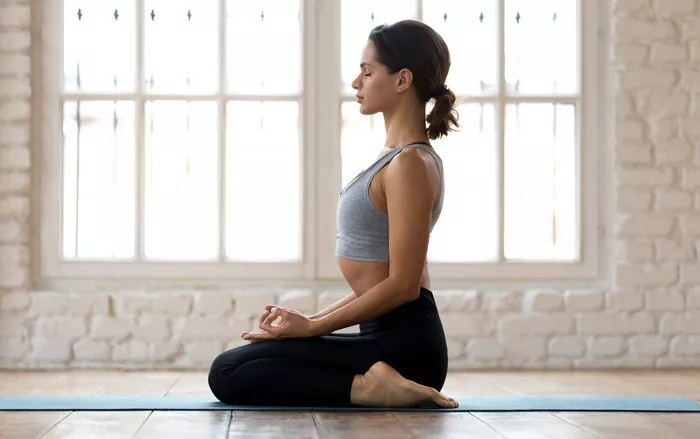Ashtanga Yoga is renowned for its dynamic and rigorous practice structure. Comprising a set sequence of postures that are performed in a specific order, synchronized with breath, it offers numerous physical and mental benefits. However, this very intensity can be misconstrued as a source of danger if not properly understood and approached.
The Physical Demands
Muscular and Joint Stress: Ashtanga’s postures require significant muscular engagement, from the powerful binds in the primary series to the advanced backbends in later levels. Muscles are constantly challenged, and joints such as the shoulders, wrists, and knees bear substantial load. For instance, postures like Chaturanga Dandasana demand strong triceps, shoulders, and core muscles, and incorrect execution can put excessive stress on the joints.
Endurance and Flexibility Requirements: The practice demands a high level of physical endurance as practitioners flow through the sequence, often sweating profusely as internal heat builds. Additionally, certain postures require extreme flexibility, like the deep forward folds and backbends. If the body is not gradually conditioned to meet these demands, it can lead to discomfort or injury.
The Breath – Asana Synchronization
The ujjayi breath in Ashtanga is integral to the practice. While it generates heat, purifies the body, and helps with focus, improper breathing can be problematic. For example, holding the breath during challenging postures can increase internal pressure, potentially straining the cardiovascular system and disrupting the flow of the practice.
The Role of Improper Alignment in Potential Dangers
One of the main factors that can make Ashtanga Yoga seem dangerous is improper alignment of postures.
Incorrect Posture Execution
Shoulder and Wrist Injuries: In many Ashtanga postures, such as downward – facing dog (Adho Mukha Svanasana) and Chaturanga, incorrect shoulder and wrist alignment is common. If the shoulders are not stacked over the wrists or if the wrists are bent at an awkward angle, it can lead to repetitive strain injuries over time.
Back and Hip Strain: During backbends and twists, if the spine is not properly engaged or if the hips are not in the correct position, it can cause strain on the lower back and hips. For instance, in postures like Ustrasana (Camel Pose), a lack of core engagement and improper hip extension can put excessive stress on the lumbar spine.
Lack of Awareness and Guidance
Without proper guidance from a qualified instructor, practitioners may not be aware of the correct alignment cues. This lack of awareness can result in incorrect posture execution, increasing the risk of injury. Moreover, practitioners may not know how to modify postures according to their individual body limitations, further contributing to potential harm.
Individual Factors: Determining the Risk Level
Each practitioner’s body and circumstances play a crucial role in assessing the danger level of Ashtanga Yoga.
Pre – existing Health Conditions
Injuries and Medical Issues: Practitioners with pre – existing injuries, such as a shoulder impingement or a lower back problem, need to be particularly cautious. Certain Ashtanga postures may exacerbate these conditions if not modified or avoided. For example, someone with a knee injury may find the deep lunges in the sequence painful and potentially harmful.
Fitness and Flexibility Levels: Beginners with low fitness levels or limited flexibility may face a higher risk of injury if they try to force themselves into advanced postures too quickly. It’s essential to build up strength and flexibility gradually to reduce the risk of overstretching or straining muscles.
Mental and Emotional State
Stress and Fatigue: Practicing Ashtanga when stressed or fatigued can also increase the risk of injury. A tired mind and body may not be as focused on proper alignment and may make mistakes in executing postures. Additionally, high stress levels can lead to muscle tension, making it more difficult to move through the sequence smoothly.
Motivation and Expectations: Unrealistic motivation and expectations can be a pitfall. If a practitioner is overly eager to progress quickly and tries to skip the foundational steps, they are more likely to get injured. It’s important to approach the practice with patience and a realistic understanding of one’s own capabilities.
Safety Precautions: Mitigating the Risks
Despite the potential risks, there are several ways to make Ashtanga Yoga a safe and rewarding practice.
Qualified Instruction
Finding the Right Teacher: Choosing a qualified Ashtanga instructor is paramount. A good teacher will not only teach the correct postures but also provide personalized guidance based on the student’s body type, fitness level, and health conditions. They can help students learn proper alignment, modifications, and progress at a safe pace.
Learning from Experience: Experienced teachers can share their own insights and knowledge about the practice, including common mistakes to avoid and how to prevent injuries. They can also create a supportive learning environment where students feel comfortable asking questions and expressing concerns.
Self – Awareness and Listening to the Body
Mindful Practice: Practicing Ashtanga mindfully means being fully present in each posture, paying attention to how the body feels, and making adjustments as needed. If a posture causes pain beyond a tolerable stretch, it’s a sign to stop or modify the pose.
Regular Self – Assessment: Regularly assessing one’s own progress and limitations is important. This can help in setting realistic goals and making informed decisions about the practice, such as when to introduce new postures or increase the intensity.
Appropriate Warm – up and Cool – down
Preparing the Body: A proper warm – up before an Ashtanga practice helps to loosen the muscles, increase blood flow, and prepare the body for the more intense postures. Simple stretches, gentle movements, and a few rounds of Sun Salutations can be an effective warm – up.
Restoring the Body: A cool – down at the end of the practice is equally important. It allows the body to gradually return to a resting state, helps reduce muscle soreness, and promotes relaxation. Gentle stretches and relaxation techniques like Savasana can be included in the cool – down routine.
The Positive Side: Weighing the Benefits Against the Risks
While there are potential risks associated with Ashtanga Yoga, it’s important to also consider the numerous benefits it offers.
Physical Benefits
Strength and Flexibility Gains: Regular Ashtanga practice can lead to significant improvements in strength, flexibility, and endurance. The repeated performance of postures helps build muscle tone, increase joint mobility, and enhance overall physical fitness.
Improved Cardiovascular Health: The synchronized movement and breath in Ashtanga act as a form of aerobic exercise, which can improve cardiovascular health by increasing heart rate, strengthening the heart muscle, and improving blood circulation.
Mental and Emotional Benefits
Stress Reduction and Mindfulness: Ashtanga Yoga promotes mindfulness and relaxation. The focus on breath and movement helps to calm the mind, reduce stress, and improve mental clarity. It also provides a space for self – reflection and inner peace.
Enhanced Self – Confidence and Discipline: Achieving progress in Ashtanga, whether it’s mastering a new posture or increasing the length of the practice, can boost self – confidence. The discipline required to maintain a regular practice also translates into other areas of life, helping to improve focus and self – control.
Conclusion
Ashtanga Yoga is not inherently dangerous, but like any physical activity, it comes with its own set of risks. The intensity of the practice, improper alignment, individual factors, and lack of awareness can contribute to potential dangers. However, by taking appropriate safety precautions such as seeking qualified instruction, being self – aware, and warming up and cooling down properly, these risks can be significantly mitigated.























